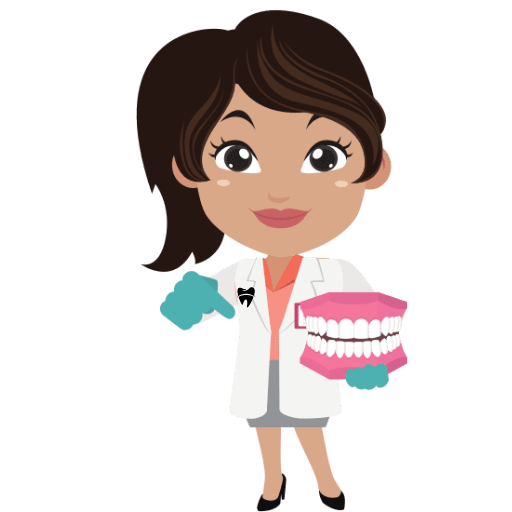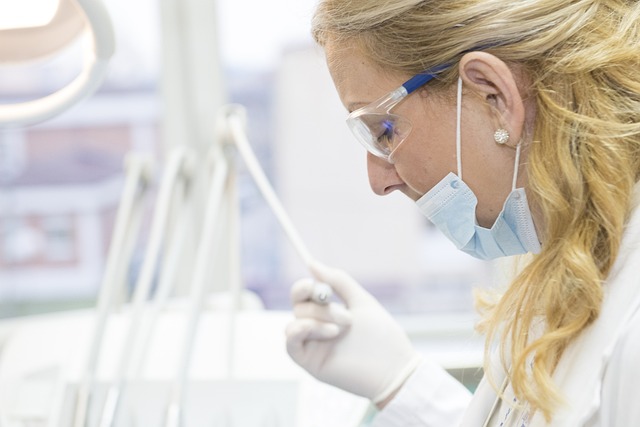Welcome to our informative article on dental crown removals conducted by professionals. Dental crowns, also known as dental caps, play a crucial role in restorative dentistry by providing strength, protection, and aesthetic appeal to damaged teeth. However, there are various situations where the removal of a dental crown becomes necessary, either due to a faulty restoration, the need for a new crown, or other oral health concerns. In this article, we will delve into the expert insights and techniques employed by dental professionals for safe and effective dental crown removals. We will explore the reasons behind crown removal, discuss the different removal methods used, and emphasize the importance of
1. Understanding the Need for Dental Crown Removal: A Comprehensive Overview by Experts
There are various instances in which the removal of a dental crown becomes necessary. This comprehensive overview, prepared by experts in the field, will provide a detailed understanding of when and why dental crown removal may be required.
1. Decay or damage: If a dental crown becomes decayed or damaged, it may need to be removed to address the underlying issue and prevent further complications.
2. Infection: If an infection develops around a dental crown, it is essential to remove it promptly to treat the infection and avoid the potential spread of bacteria.
3. Poor fit: Sometimes, a dental crown may not fit properly, causing discomfort, pain, or irritation. In such cases, it is advisable to remove the crown and reevaluate the situation.
4. Allergic reactions: Individuals may experience an allergic reaction to the materials used in a dental crown. Removing the crown is necessary to prevent any adverse effects and explore alternative options.
5. Structural issues: If the underlying tooth structure holding the dental crown is compromised due to decay or trauma, it may be necessary to remove the crown to address the root cause.
Dental crown removal is usually performed by a dental professional using specialized tools and techniques to minimize discomfort and maintain oral health. It is crucial to consult with a skilled dentist who can evaluate the need for crown removal on an individual basis and provide appropriate advice and treatment.
Step 1: Examination and assessment of the crown Before dental crown removal, a thorough examination of the crown is conducted by our team of highly skilled dental professionals. This involves assessing the condition of the crown, checking for any signs of damage or decay, and evaluating the overall health of the underlying tooth and gum tissues. X-rays may also be taken to get a detailed view. Step 2: Numbing the affected area Prior to the crown removal procedure, a local anesthetic is administered to ensure your comfort throughout the process. Our dentists are experienced in delivering anesthetics with minimal discomfort, ensuring a pain-free experience. The numbing effects will allow us to proceed with the removal without any discomfort or sensitivity to the tooth and surrounding tissues. Once the area is numb, our dental professionals will use specialized tools to carefully dislodge the crown. This is done by gently applying pressure to the edges of the crown and gradually lifting it off the tooth. Our team has the expertise to perform this step with precision, minimizing any potential damage or discomfort to the underlying tooth structure. After the crown has been successfully removed, our dental professionals will thoroughly clean the tooth and inspect it for any signs of damage or decay. This step is crucial to ensure that the underlying tooth is in optimal condition before proceeding with any further treatment or restoration. When it comes to removing dental crowns, experienced dental specialists have developed various techniques that ensure the procedure is efficient and successful. These techniques are crucial in maintaining the integrity of the underlying tooth structure and preventing any damage or discomfort during the removal process. Insightful dental specialists have shared their expertise on the most effective dental crown removal techniques. Here are some key insights:
3. Dental Crown Removal Techniques: Insights from Experienced Dental Specialists
These insights from experienced dental specialists provide valuable information for both patients and fellow practitioners. By incorporating these techniques into their practice, dental professionals can ensure the safe and efficient removal of dental crowns, promoting optimal oral health for their patients.
4. Ensuring Patient Safety: The Importance of Professional Dental Crown Removal
When it comes to dental crown removal, ensuring patient safety is of utmost importance. A professional approach to this procedure is necessary to avoid potential risks and complications. Here are some key reasons why professional dental crown removal should be prioritized:
1. Minimizing damage to the tooth structure: Professional dental crown removal ensures that the tooth underneath is not harmed during the process. Skilled dental practitioners use specialized tools and techniques to carefully detach the crown without causing unnecessary damage or weakening the tooth.
- 2. Preventing injury: Improper removal of dental crowns can lead to injuries such as cuts or scrapes to the soft tissues in the mouth. By entrusting the removal process to a professional, patients can reduce the risk of such injuries and ensure a safe dental experience.
- 3. Avoiding infection: Professionals follow strict sterilization protocols, minimizing the chances of infection during crown removal. Their knowledge and experience enable them to maintain a clean and sterile environment, ensuring patient safety throughout the procedure.
- 4. Efficient removal: Professionals possess the necessary skills and tools to perform dental crown removal efficiently. This results in a smoother and quicker process, reducing the time patients spend in the dental chair.
By choosing professional dental crown removal, patients can have peace of mind knowing that their safety is given utmost priority. It is important to consult a qualified dental professional who has the expertise and knowledge to perform the procedure with precision and care.
Once a dental crown is placed, it is intended to remain in place for many years. However, there are certain circumstances in which dental crown removal becomes necessary. Understanding the common reasons for crown removal can assist both dental professionals and patients in making informed decisions regarding their oral health. Below are some of the most frequently encountered reasons for dental crown removal: Consulting with a dental professional is crucial when facing any of these situations to determine the most suitable course of action. Regular dental check-ups, diligent oral hygiene practices, and early intervention can reduce the likelihood of complications that may necessitate crown removal. When it comes to crown removal, dental professionals can encounter various complications that may impede the process. Knowing how to handle these challenges is essential to ensure optimal patient outcomes. In this section, we provide expert perspectives on some of the most common issues faced during crown removal and the solutions recommended by experienced dental practitioners. 1. Fractured Crown: Occasionally, a crown may fracture during the removal process, posing a challenge to dental professionals. To address this, experts suggest:
6. Challenges and Solutions: Expert Perspectives on Dealing with Complications during Crown Removal
2. Subgingival Margins: Dealing with subgingival crown margins can be tricky, particularly when it comes to achieving complete removal without causing damage. Experts recommend the following solutions:
-
- Ensuring proper isolation and moisture control to enhance visibility and facilitate margin identification.
- Utilizing ultrasonic scalers to carefully remove subgingival cement, allowing better access to the crown margin.
- Using crown removal tools, such as crown grips or crown cutters, to precisely remove the crown while minimizing trauma to the surrounding tissues.
7. The Role of Advanced Technology in Dental Crown Removal: Insights from Professionals
In the field of dentistry, advanced technology has revolutionized various aspects of dental care, including the removal of dental crowns. With the introduction of innovative tools and techniques, professionals have gained valuable insights into the process, allowing for more precise and efficient crown removal procedures. These advancements have significantly improved patient experiences and outcomes, making dental crown removal a smoother and less uncomfortable process.
One of the key advancements in dental crown removal is the use of CAD/CAM technology. Computer-aided design and computer-aided manufacturing has transformed the way dentists approach crown removal by providing highly accurate digital models. This assists in creating customized tools and guides that aid in the careful extraction of dental crowns. Additionally, the use of advanced imaging techniques such as cone beam computed tomography (CBCT) allows dentists to visualize the exact position and orientation of the crown, further enhancing the precision and ease of the removal procedure.
8. Post-Removal Considerations: Expert Advice on Oral Health and Restoration Options
After a tooth extraction, it’s crucial to understand the post-removal considerations for maintaining good oral health and exploring restoration options. We have consulted dental experts who provide valuable advice to help you navigate this process smoothly.
Oral Care Post-Extraction:
Proper oral hygiene is essential to prevent complications and promote healing. Follow these expert recommendations:
-
- Gently rinse your mouth with warm saltwater solution multiple times a day to reduce swelling and speed up healing.
- Avoid rinsing or spitting forcefully for the first 24 hours to prevent dislodging of blood clots.
- Do not use a straw, smoke, or consume hot liquids for the first few days as these can interfere with the healing process.
- Continue brushing your teeth gently, but avoid the extraction site for the initial 24 hours.
Restoration Options:
Dental professionals can provide several solutions to replace the missing tooth and restore your smile. Consider these possibilities:
- Dental Implants: This long-term option involves surgically implanting an artificial tooth root into the jawbone, providing a durable and natural-looking replacement.
- Fixed Bridges: These prosthetic devices are comprised of a pontic tooth (artificial tooth) fused between two dental crowns. They are bonded to the adjacent teeth, allowing for a sturdy and functional replacement.
- Removable Partial Dentures: These removable appliances clasp onto the remaining teeth and fill the gap left by the extracted tooth, improving functionality and aesthetics.
By following proper oral care instructions and discussing restoration options with your dental professional, you can ensure a healthy recovery and explore the best treatment plan for your specific needs.
9. Expert Strategies for Minimizing Discomfort during Dental Crown Removal Procedures
Removing dental crowns can sometimes be an uncomfortable procedure for patients. However, there are expert strategies that can help minimize discomfort and make the process more bearable. Here are a few tips to consider:
1. Proper numbing: The first step to minimizing discomfort during a dental crown removal is to ensure adequate numbing of the affected area. The dentist will administer local anesthesia to numb the surrounding tissues and nerves, ensuring that you experience minimal pain during the procedure.
2. Relaxation techniques: Dental procedures can often cause anxiety and tension, which can increase discomfort. To combat this, try practicing relaxation techniques before and during the crown removal. Deep breathing exercises, meditation, or listening to calming music can help reduce stress and make the process more comfortable for you.
10. Patient Education and Empowerment: Expert Recommendations for Dental Crown Removal Decision-making
The decision to remove a dental crown can be a complex one, and it is important for patients to be well-informed and empowered when making this decision. Experts recommend considering the following factors:
Evaluation:
- Before deciding on crown removal, it is crucial to have a thorough evaluation by a dental professional. They will assess the condition of the crown, the underlying tooth, and surrounding structures to determine whether removal is necessary.
- X-rays and dental imaging may be used to identify any signs of decay, tooth fracture, or damage to the supporting structures.
- Consultation with a dental specialist, such as a prosthodontist, may be recommended to ensure comprehensive evaluation and expertise.
Reasons for Removal:
- If the crown exhibits signs of significant damage, such as fractures or breakage, removal may be necessary to prevent further complications.
- In cases where there is extensive tooth decay or root canal infection beneath the crown, removal is often recommended to address the underlying issue and maintain oral health.
- If the crown no longer fits properly or has become loose, it may need to be removed to avoid potential discomfort or damage to the tooth or surrounding tissues.
FAQ
Q: What is a dental crown removal?
A: Dental crown removal is a dental procedure where a professional dentist removes an existing dental crown, which is a tooth-shaped cap used to restore the appearance and functionality of a damaged tooth.
Q: Why would someone need to have their dental crown removed?
A: There could be several reasons for dental crown removal. Some common reasons include decay or damage beneath the crown, the need for a larger crown due to further tooth damage, aesthetic purposes, or when the crown does not fit properly anymore.
Q: Who performs dental crown removals?
A: Dental crown removals are performed by professional dentists or dental specialists such as prosthodontists or oral surgeons who have the expertise and training to safely remove dental crowns.
Q: How is a dental crown removed?
A: To remove a dental crown, the dentist will first numb the area with a local anesthetic. Then, using specialized dental instruments, they gently separate the crown from the underlying tooth structure. Once the crown is loosened, it can be safely lifted off the tooth.
Q: Are dental crown removals a painful procedure?
A: No, dental crown removals are typically not painful. Dentists numb the area beforehand, ensuring that you feel little to no discomfort during the procedure. However, if you experience any pain or discomfort afterward, your dentist can prescribe pain medication to alleviate it.
Q: Can dental crown removals cause damage to the underlying tooth?
A: While rare, there is a small risk of damage to the underlying tooth during the crown removal process. However, experienced dental professionals take great care to minimize any potential damage and will address any concerns during the procedure.
Q: What happens after a dental crown is removed?
A: After the removal, the tooth underneath the crown will be thoroughly examined to determine if any further treatment is necessary, such as filling a cavity or placing a new crown. The dentist may take an impression to create a temporary crown to protect the tooth until the permanent restoration is ready.
Q: How long does the dental crown removal procedure take?
A: The duration of the dental crown removal procedure can vary depending on several factors, such as the complexity of the case and the condition of the crown. In most cases, the procedure can be completed within one dental appointment.
Q: Are there any risks or complications associated with dental crown removals?
A: Overall, dental crown removals are considered safe procedures. However, as with any dental procedure, there is a minimal risk of complications such as gum irritation, temporary sensitivity, or damage to the underlying tooth structure. Your dentist will discuss any potential risks with you before the procedure.
Q: How much does a dental crown removal procedure cost? In conclusion, dental crown removals performed by professionals are crucial procedures that require expert insights and precision. Understanding the various reasons for crown removal, such as restoration considerations, infection control, or patient comfort, allows dental experts to develop an appropriate treatment plan. A skilled professional will carefully evaluate the crown’s condition, assess any potential complications or risks, and utilize advanced techniques to ensure a successful and comfortable removal process. By prioritizing patient safety and utilizing best practices, dental professionals can provide effective crown removals, promoting oral health and overall well-being. Remember, if you suspect any issues with your dental crown, seeking professional advice is always the best course of action.
A: The cost of a dental crown removal procedure can vary based on factors such as geographic location, the complexity of the case, and any additional treatments required. It is best to consult with your dentist, who can provide a personalized estimate based on your specific needs.



